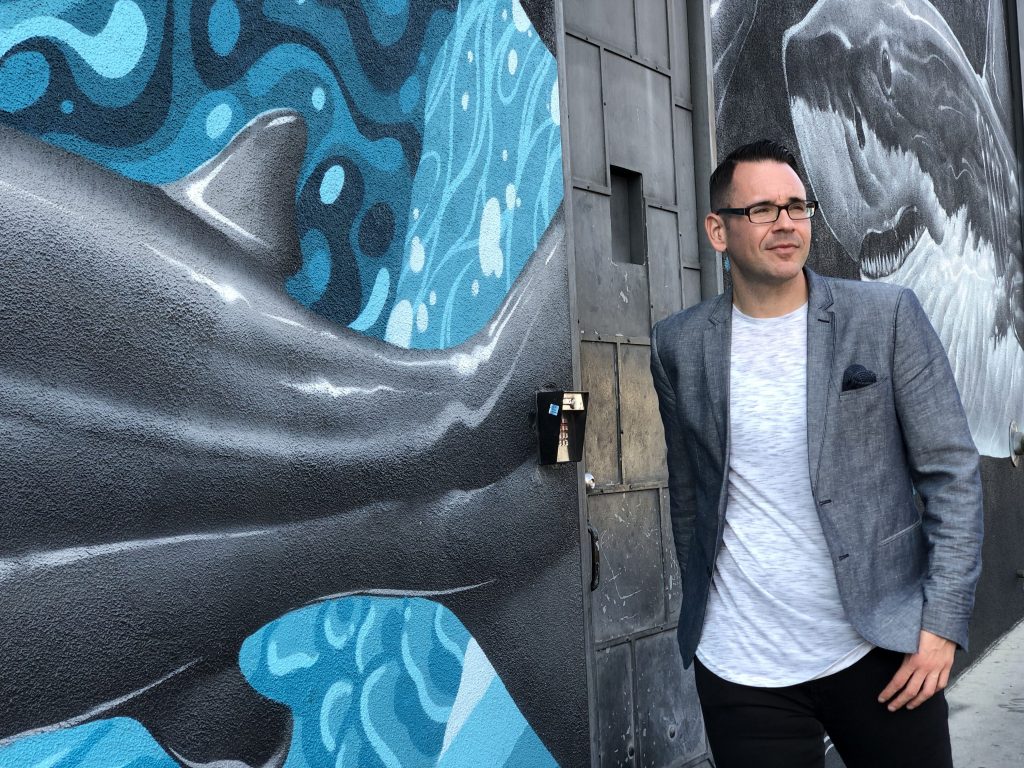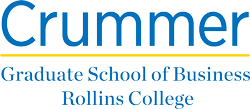THOUGHT LEADERSHIP
Three Unlikely Strategies to Attract Customers (and investors) to Your Business

This article appears in the August 2020 edition of the Center for Advanced Entrepreneurship newsletter.
Jason Goldberg `13MBA, award-winning entrepreneur, author, and creator of both Playful Prosperity and the Business UNusual programs, shares three ways to attract customers, and possibly investors.
I am absolutely fascinated by marketing!
I geek out on buyer psychology, the intricacies of direct response copywriting, the science behind urgency and scarcity and I even had a conversation with some colleagues of mine last week about how the energetic polarities of the masculine and feminine can be used (and unfortunately abused) to trigger people into taking action from a place of lack and not-enoughness.
 The main reason I am so intrigued by that subject matter is probably very similar to why bomb technicians get so excited about explosives – not because they want to harm innocent people, but instead to understand how to better protect and serve them by really getting how it all works.
The main reason I am so intrigued by that subject matter is probably very similar to why bomb technicians get so excited about explosives – not because they want to harm innocent people, but instead to understand how to better protect and serve them by really getting how it all works.
You see, my business is working almost exclusively with service-based entrepreneurs and small business owners, many of whom market and sell their services online with the vast majority selling a premium type of coaching or consulting service; normally in the thousands or tens of thousands of dollars per engagement.
Much of the work I do with them is to actually undo what they have learned about sales and marketing and to transition from scarcity-based, flavor-of-the-month tactics into something more timeless; something I call “selling by serving”.
Based on my work with hundreds of these entrepreneurs over the last several years, I want to share with you three powerful shifts to make if you want to start bringing customers (and ideally raving fans) into your business. Oh, and bonus, these principles totally work with investors as well.
Now, one word of caution before we dive in.
I have seen time and time again that the allure of a quick fix or a mass-marketing technique that instantly gets you millions of dollars of funding or hundreds of thousands of dollars of revenue overnight, tends to trump the fundamental principles I’m going to share with you.
My invitation to you is to really slow down as you read this and remember that, just as a skyscraper requires a deeper foundation than a 4-story apartment building, a sustainable and profitable business requires a deeper foundation than a “here-today-gone-tomorrow” type of enterprise.
- Focus on Dialogue over Monologue
Most marketing towards potential customers (and courting of potential investors) involves a lot more talking “at” people than talking “with” people. In order to build relationships with those who would buy from or invest in your business, you must understand the power of dialogue, of knowing where on the path of pain/problem/solution your prospect currently resides, and of storytelling and tailoring your message to reflect that – whether that is using traditional marketing channels, social media or even investor presentations.
For example, if your ideal client keeps having headaches but they don’t know why, they are pain aware. This means your message and “dialogue” with them needs to help them see that you understand their situation and that you know what the actual problem is. Let’s say the actual problem is that they have the wrong prescription on their reading glasses and, through dialogue, you help them see that. You have just upgraded their awareness and they will trust you even more. It is a known principle in marketing that if you can articulate someone’s pain or problem as good or better than they can, they will have a level of trust that you also have the solution. In order to have this kind of clarity with the people you want to serve, you must engage them in dialogue and conversation – whether on- or off-line – in a way that not only positions you as a subject matter expert, but more importantly that you are seen as a human who actually cares.
Which brings us to number two.
- Intimacy over Automation
There is a word in the world of entrepreneurship that often gets tossed around at the expense of building something sustainable. That well-intentioned but poorly implemented word is “scale”. Where so many entrepreneurs miss the mark when trying to attract clients to their offering, is that they focus too much on automation and scale and not enough on intimacy and connection at the beginning.
Sure, at some point, if the goal is massive growth, market domination, broader reach, and impact, the systems that enable scale are very important. The challenge is that when you are starting out, those things are distractions from, not contributors, to building a sustainable enterprise. For example, I think we would all agree that AirBnB has done a pretty good job at scaling, but in the beginning, they literally went door to door in New York city recruiting new users and helping current ones make their listings better. Manually. One foot in front of the other. A street team, laptops in hand, ready to help.
Listen, I love technology – I’m always looking for the latest and greatest flashy app that I can try to create a problem in my business just so I can use the app to fix it, but what has been more powerful for me is to locate technology solutions that actually leverage my time and energy so that I can focus on more intimacy.
For example, I use a service called Bonjoro so anytime someone books a call with someone from my sales team for a consultation, the app notifies me and I can quickly send a personalized video to congratulate them on booking the call and to tell them what to expect next. This one very small change, took us from at one point having close to a 75% no-show rate on calls down to nearly zero! Why? Because we just went from a two-dimensional website with an integrated calendar system into real people, who really care, and who are truly excited for this person’s potential by coming to this call.
Think of things that people in your industry typically automate when it comes to the end customer (or prospective customer) and ask yourself, how can I bring 20% more intimacy into that equation. That alone will make you stand out leaps and bounds beyond the competition.
Which takes us to number three…
- Your Disadvantage is Your Differentiator
While completing my Executive MBA at Crummer, I was honored to be a part of the first Entrepreneurial Scholar of Distinction program with our amazing mentor and my dear friend Dr. Pete McAlindon. Together, our small team took on what was supposed to be a market research project for NASA, which morphed into us prototyping and packaging the technology, finding a potential buyer for the technology, and culminated with us asking NASA for exclusive rights to 3 patents from the shuttle program so that we, a group of Crummer students, could form a company focused on the commercialization of said technology.

There was no reason NASA should have given such access to a group of graduate students, especially when there was a billion dollar sensor company who also had expressed interest in licensing the patents.
I remember one night with our team, sitting around a table in a meeting room on campus, talking about how there was no way we could compete with this other company – we were overflowing with clear “disadvantages”.
Then it occurred to us that every one of our perceived disadvantages was actually a clear differentiator.
This other company had a massive budget for research and developmet, which would be fought for by managers from all of the various product lines they carried. We on the other hand were all in on this NASA tech and only this NASA tech.
They had a large staff of project managers, engineers and consultants, which means it would take them a tremendous amount of time to make changes to the technology as it was being prototyped and put into the market. We on the other hand had a very “lean” team and could make rapid changes to our prototype, packaging and process – almost in real-time which meant faster route to market, faster feedback and faster pivoting.
And the list continued on and on until we had a half a dozen or so. Spoiler, we won the bid and received exclusive licensing.
Never forget that if you are a new company trying to get off the ground and the argument from prospective clients or investors is that you are too small, too new, or face too much competition, that it just means it’s time for your creativity to help them see how each of those disadvantages is a true differentiator (using dialogue of course).
So, there you have it, three unlikely strategies to attract customers to your business.
If I’m being honest, I probably should have called this article, “three strategies to set your business up for success that 95% of people won’t implement because it doesn’t sound sexy enough or tech crunch worthy” but I know that if you have read this far, it’s because you know deep down that focusing on integrity, creativity, the path of mastery, true value-creation and service, and really giving a, well, you know about the work you do and who you do it for is a foundational element for any product or service that stands the test of time, that is, as Ryan Holiday calls it, a “Perennial Seller”.
Play the long game, serve first, double down on astonishing the people in your world and I promise you that all of the other tactics and strategies you use to market and sell your services, will be exponentially more effective.
 Jason Goldberg is an award-winning entrepreneur, international speaker, successful author (Prison Break: Vanquish the Victim, Own Your Obstacles, and Lead Your Life) and creator of both the Playful Prosperity and the Business UNusual System programs. While at the Crummer Graduate School of Business at Rollins College, Jason was an Entrepreneurial Scholar of Distinction, both a semi-finalist and a finalist in the annual Venture Plan Competition, and served on the Crummer Graduate School Leadership Advisory Board. Additionally, Jason and his teammates in the NASA track won the Federal Laboratory Consortium Excellence in Technology Transfer Project of the Year Award for their work with the Kennedy Space Center. Jason can be reached at JG@TheJasonGoldberg.com.
Jason Goldberg is an award-winning entrepreneur, international speaker, successful author (Prison Break: Vanquish the Victim, Own Your Obstacles, and Lead Your Life) and creator of both the Playful Prosperity and the Business UNusual System programs. While at the Crummer Graduate School of Business at Rollins College, Jason was an Entrepreneurial Scholar of Distinction, both a semi-finalist and a finalist in the annual Venture Plan Competition, and served on the Crummer Graduate School Leadership Advisory Board. Additionally, Jason and his teammates in the NASA track won the Federal Laboratory Consortium Excellence in Technology Transfer Project of the Year Award for their work with the Kennedy Space Center. Jason can be reached at JG@TheJasonGoldberg.com.
Click here to join the Center for Advanced Entrepreneurship mailing list.

